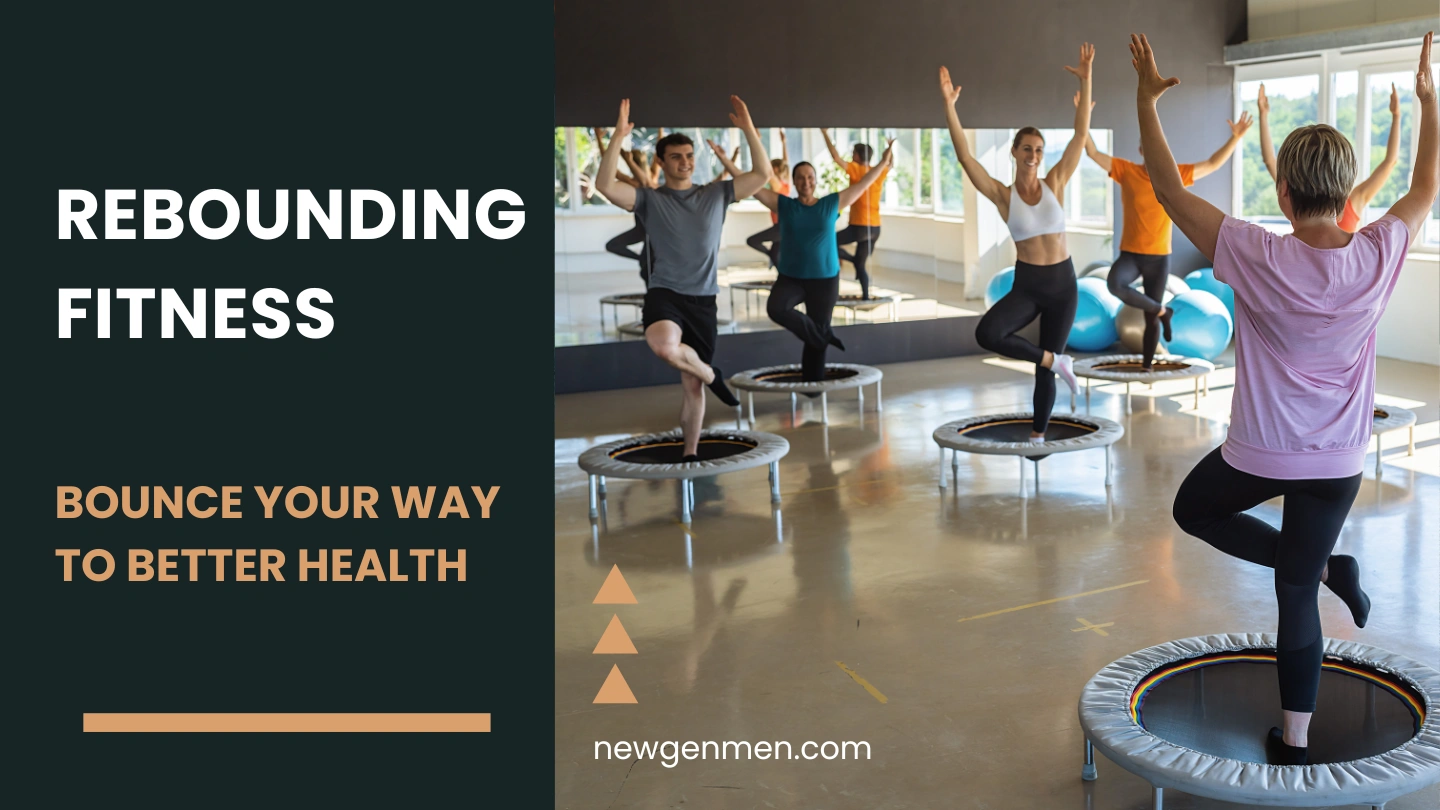If you think trampolines are just for kids, you have not been paying attention to one of the fastest-growing fitness trends of 2025. Rebounding, aka mini trampoline workouts, is making waves on social media and in gyms.
It’s a fun and highly effective way to improve your cardiovascular health and build muscle endurance, while protecting your joints. If your current cardio routine feels stale, rebounding fitness could be a way to spice things up.
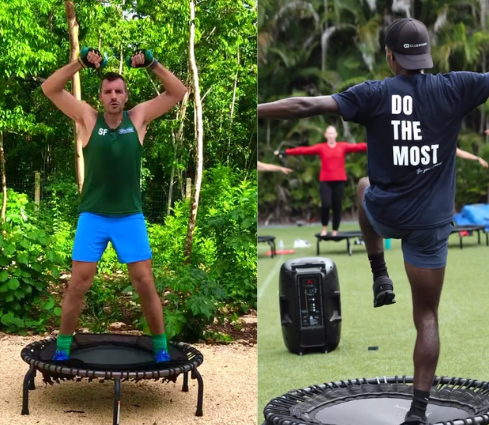
Rebounding is not new. NASA studied it decades ago and found that just 10 minutes of bouncing could outperform a 30-minute jog in terms of cardiovascular benefits. But now, thanks to TikTok, Instagram, and home fitness culture, it is getting a massive glow-up. Trainers are building entire programs around it, influencers are posting bounce workouts in stylish activewear, and guys are starting to realize this is more than just a gimmick.
And yes, men are getting into rebounding. Women may have popularized the recent trend, but men have jumped on quickly (pun intended), and have been joining in on co-ed rebounding sessions or adding it to their home workouts.
What Exactly is Rebounding?
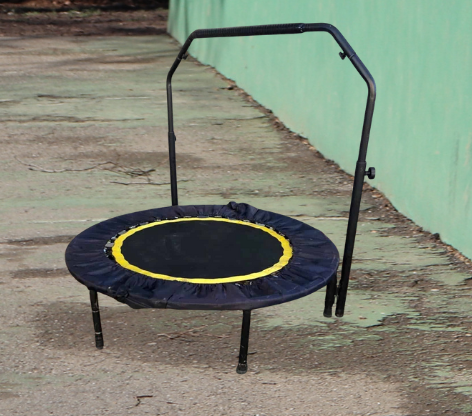
Rebounding is a form of cardio and strength training performed on a small trampoline, often called a rebounder. It can be as simple as bouncing in place or as intense as a choreographed HIIT routine. It’s often used for warmups, endurance training, plyometrics, or even low-impact recovery sessions.
The motion engages your legs, core, and stabilizing muscles while also giving your heart and lungs a solid workout. You can go all-out for calorie burn or keep it light for circulation and lymphatic health. Plus it’s just fun to bounce around and a good change it from your usual workouts you’re tired of doing.

Why Men Are Getting Into It
Rebounding used to be marketed heavily toward women, especially in group fitness classes. But more men are realizing its benefits. It is joint-friendly, which is a big plus for guys who have knee or ankle issues from running, basketball, or heavy lifting. It also offers a cardio option that is far from boring. You do not have to force yourself to slog through another treadmill session.

Plus, because it challenges your balance and coordination, it is great for athletes who want to improve agility. MMA fighters, surfers, and snowboarders have started using it to sharpen reflexes and strengthen stabilizing muscles.
The Science Behind the Bounce
When you bounce, your body experiences brief periods of increased gravity at the bottom of the jump and weightlessness at the top. This constant shift forces your muscles to contract in ways they do not during standard workouts.
Key benefits backed by research:
- Better cardiovascular health: Improves oxygen uptake and endurance.
- Lymphatic drainage: The up-and-down motion helps flush toxins from your body.
- Low joint impact: Softer landings protect knees, hips, and ankles.
- Full-body engagement: Works muscles in your legs, core, and back at the same time.
- Improved balance and coordination: Great for sports performance and injury prevention.
How to Start Rebounding
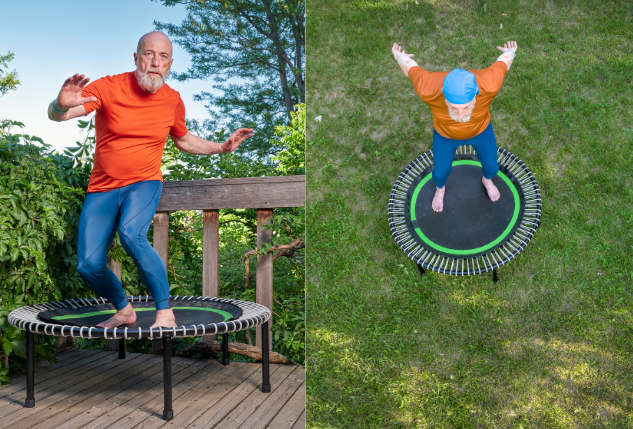
You do not need much to get started with a rebounding fitness routine, just a good-quality rebounder and a bit of space.
Choose the right trampoline
Look for one with strong springs or bungee cords, a sturdy frame, and a non-slip surface. Cheaper models might feel unstable or wear out quickly. Plus, the last thing you want is for the trampoline to fall apart as you’re jumping on it, where you may twist an ankle or worse.
Master the basic bounce
Start with gentle, controlled bounces where your feet barely leave the surface. This helps you get comfortable and engage your core. You should be moving in rhythm with the trampoline, not in the opposite direction, against it.
Add intensity gradually
Once you feel stable, you can add jogging in place, jumping jacks, high knees, or even small squat jumps.
Mix it into your routine
Use it as a warmup for weight training, a standalone cardio session, or an active recovery day.
Sample 15-Minute Beginner Rebounding Workout
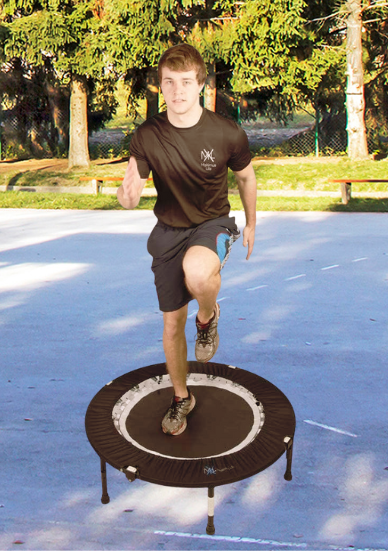
Warmup – 3 minutes
Gentle bouncing, light jog in place.
Circuit – repeat 3 times
- 1 minute high knees
- 1 minute squat jumps
- 1 minute side-to-side hops
Cooldown – 2 minutes
Gentle bounce, deep breathing.
Common Mistakes to Avoid
- Over-jumping: You do not need huge air time to get results. Small, controlled bounces are often better.
- Poor posture: Keep your core tight, shoulders relaxed, and eyes forward.
- Skipping proper footwear: Athletic shoes with good support help with stability.
- Buying a cheap rebounder: Flimsy equipment can make the workout less effective and more dangerous.
Benefits Beyond Fitness
One of the most underrated benefits is how rebounding makes you feel. The motion releases endorphins fast, almost like a runner’s high, but without pounding the pavement. It can also help reduce stress and improve focus, making it great for midday breaks if you work from home.
There’s also a community aspect, online rebounder groups and challenges are popping up everywhere. Posting your progress or joining a virtual class can keep you motivated.
Recommended Rebounders for Beginners
JumpSport 39″ Essential Fitness Trampoline

Solid build, quiet bungee cords, great for apartment workouts.
BCAN 40/48″ Foldable Mini Trampoline
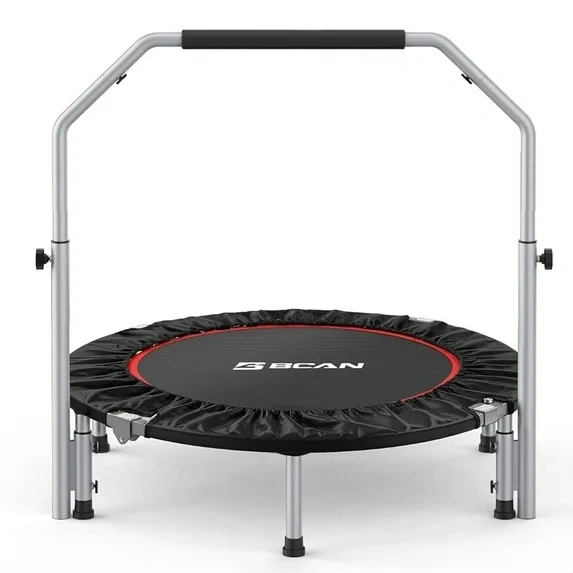
Premium option with incredible bounce quality.
Stamina 36-Inch Folding Trampoline
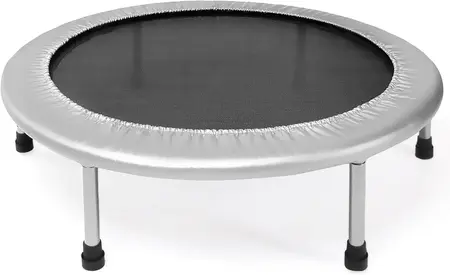
Budget-friendly starter option.
Also Read:

